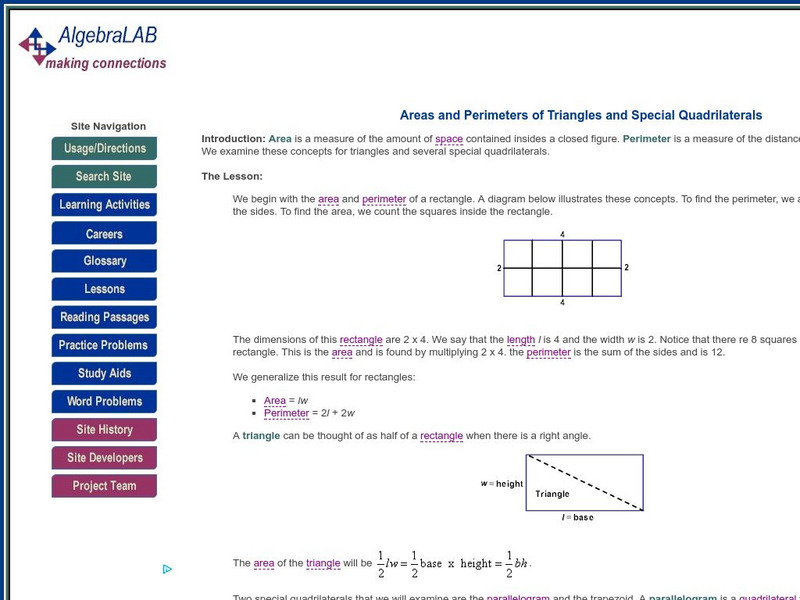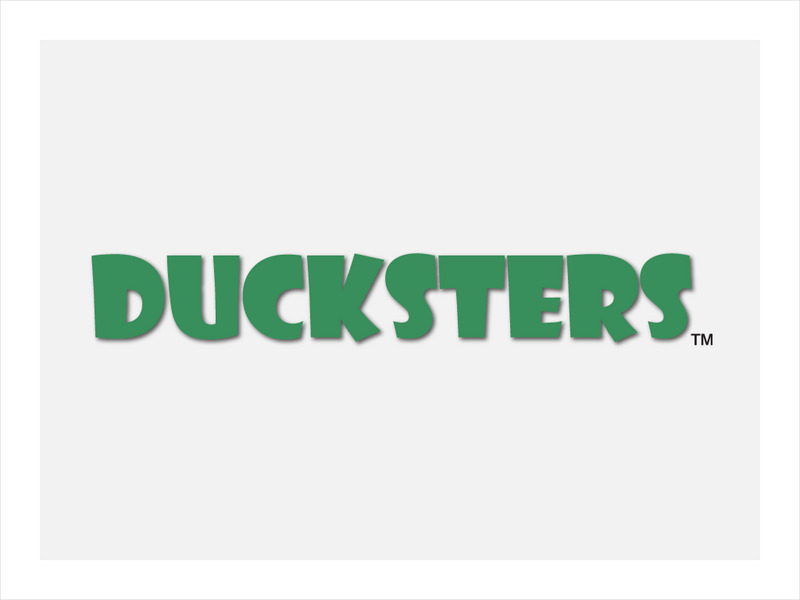Better Lesson
Better Lesson: 3 D Figures and Nets
Sixth graders explore cube nets in an effort to understand what properties are common to all nets that form a cube. Students work hands-on with nets and are then pushed to use their experience to visually determine whether other nets...
Better Lesson
Better Lesson: Area of Composite Shapes
Sixth graders take their knowledge about area of rectangles, squares and triangles and apply it to parallelograms, trapezoids, and composite shapes.
Better Lesson
Better Lesson: Area and Expressions
Sixth graders write expressions to find the area of compound figures.
Better Lesson
Better Lesson: Area of Triangles
Sixth graders apply what they know about area of other polygons to develop a formula for finding the area of a triangle.
Better Lesson
Better Lesson: Tiles and Toothpicks
How can you describe this shape's perimeter and area? Students review expectations and work together to solve problems about area and perimeter.
Better Lesson
Better Lesson: Review of Ccss 6.g.1,2,3,4 Volume and Surface Area
Practicing math problems to prepare for a geometry assessment involving volume and surface area.
National Council of Teachers of Mathematics
Nctm: Illuminations: Area of Trapezoids
Investigate how changes in the base and height of a trapezoid affect its area.
National Council of Teachers of Mathematics
Nctm: Illuminations: Area of Triangles
To find the area of a triangle, try to make a parallelogram using a copy of the triangle.
National Council of Teachers of Mathematics
Nctm: Illuminations: Igd: Area of a Parallelogram
This applet will show you how to divide the parallelogram into pieces, arrange them together to form a rectangle, and then use the formula for the area of a rectangle to find the area of the parallelogram.
Homeschool Math
Homeschool Math: Area of Triangles
This lesson presents the idea that the area of any triangle is exactly half of a certain parallelogram -- thus we get the familiar formula of multiplying the base and the altitude and taking half of that. The lesson contains varied...
Quia
Ixl Learning: Area of Trapezoids
Brush up on your math skills relating to the area of trapezoids then try some practice problems to test your understanding.
Quia
Ixl Learning: Area of Parallelograms
Brush up on your math skills relating to the area of parallelograms then try some practice problems to test your understanding.
Quia
Ixl Learning: Area of Rhombuses
Brush up on your math skills relating to the area of rhombuses then try some practice problems to test your understanding.
Quia
Ixl Learning: Area of Triangles
Brush up on your math skills relating to the area of triangles then try some practice problems to test your understanding.
Better Lesson
Better Lesson: Finding the Area of a Triangle
Sixth graders find the area of a triangle using square units and the area formula.
Better Lesson
Better Lesson: Finding the Area of a Parallelogram
Sixth graders find the area of parallelograms by using square units and the area formula.
Better Lesson
Better Lesson: Finding the Area of a Rectangle
Sixth graders use the area formula for rectangles to solve real world and mathematical problems.
Better Lesson
Better Lesson: Equivalent Numerical Expressions, Day 2 of 2
How can you represent the area of a diagram using numerical expressions? Students connect their knowledge of area and equivalent expressions to the commutative and distributive properties for day 2 of this investigation.
Better Lesson
Better Lesson: Equivalent Numerical Expressions, Day 1 of 2
How can you represent the area of a diagram using numerical expressions? Students apply their knowledge of area and order of operations to match area diagrams with numerical expressions.
National Council of Teachers of Mathematics
The Math Forum: Suzanne Alejandre: Factor Lesson
Learners will discover factoring through the area of a rectangle.
The Math League
The Math League: Figures and Polygons
This website has basic definitions for most polygons, regular and irregular.
Other
Algebra Lab: Areas and Perimeters of Triangles and Special Quadrilaterals
Learn how to find the areas and perimeters of triangles and special quadrilaterals.
Ducksters
Ducksters: Kids Math: Quadrilaterals
Explore four-sided polygons called quadrilaterals on this site.
ClassFlow
Class Flow: Perimeter & Area of Rectangles & Parallelograms
[Free Registration/Login Required] In this flipchart, students will investigate the area and perimeter of rectangles and parallelograms. This is an interactive lesson and also includes an assessment.







